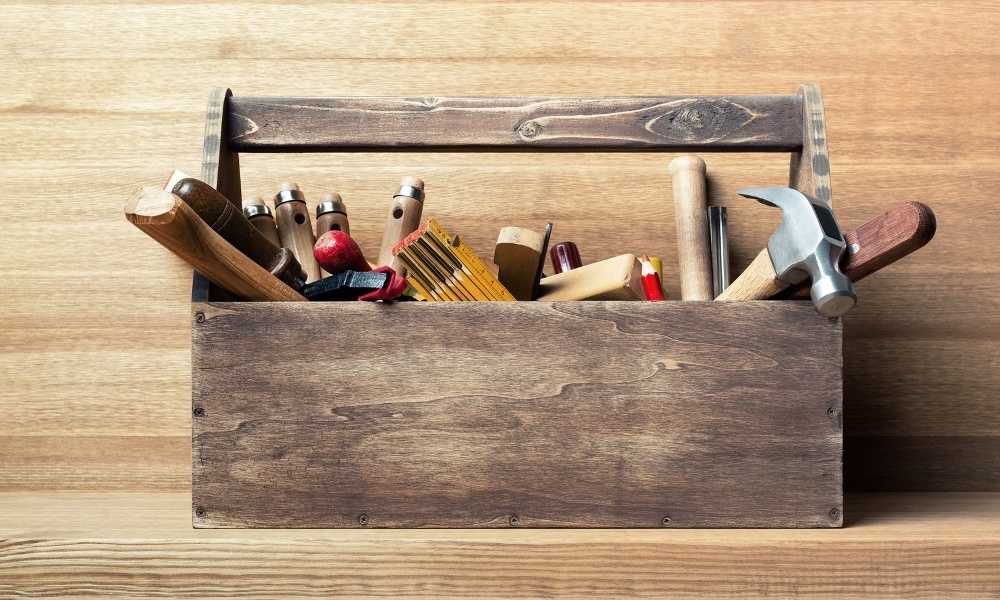Edit: More up to date in-depth guide at https://learnwoodworkingnow.com/
Woodworking is a craft that demands precision and finesse. To excel in this art, it’s essential to work smart, not just hard. In this article, we’ll explore eight woodworking strategies to boost your productivity and elevate your woodworking skills.
1. Smoother Sanding Techniques
Sanding woodwork can be laborious, but with the right approach, it becomes a skill that sets your work apart. Consider these tips for superior results:
- Embrace hand sanding with the right tools and sandpaper for exceptional finesse.
- Utilize a sanding block for even pressure distribution and a flat surface.
- Change sandpaper regularly to maintain optimal sanding efficiency.
- Always sand with the grain, especially during the final stages.
- For painted surfaces, opt for clog-resistant sandpaper to prevent buildup.
2. Say No to Drywall Screws
When joining pieces of wood, opt for wood screws over drywall screws for a more robust connection
- Drywall screws have threads that extend throughout their length, potentially pushing wood pieces apart.
- Wood screws feature a smooth shank that aids in securing pieces without separation.
- Drywall screws can break in hardwoods and are difficult to remove.
- Wood screws may require drilling, but a set of countersinking bits simplifies the process.

3. Moisture Matters
Understanding wood moisture levels is essential to prevent cracks or warping in your projects:
- Overly dry wood can swell or crack, while overly wet wood may shrink or distort.
- Moisture-related issues account for 80% of woodworking problems.
- Use a moisture meter to ensure the proper moisture content for each piece of wood.
4. Taming Glue Streaks
Prevent unsightly glue stains by employing this technique:
- Clamp pieces together without glue, masking the joint with tape.
- Afterward, separate the pieces, apply glue, and rejoin them. The excess glue will adhere to the tape, not the wood.
- Remove the tape once the adhesive dries.
5. Precision with a Drawing Square
For precise measurements and layout marking, a drafting square is your go-to tool:
- Drafting squares outperform drywall squares and eliminate the need for a carpenter square.
- They excel in the 2- to 3-foot range, providing accuracy and efficiency.
6. Organized Workspace, Enhanced Productivity
A clutter-free workspace enhances productivity. Follow these tips:
- Keep your work environment organized and clutter-free.
- Keep only essential tools and materials within easy reach.
- Designate specific areas for storage to maintain a tidy workspace.

7. Illuminate Your Shop
Proper lighting is crucial for safety and productivity:
- Ensure constant and focused lighting in all work areas.
- Consider lighting from above, focused lighting, and on-tool illumination.
- Paint walls and ceilings white to improve light diffusion.
8. Razor-Sharp Blades
Sharp tools are the hallmark of an efficient woodworker:
- Dull tools tear at wood fibers, resulting in an unprofessional finish.
- Invest in sharpening tools like a bench grinder, wet grinder, or belt sander.
- Maintain the tool’s temperature by dipping it in cool water during grinding.
- After grinding, hone with a wet stone or an oil stone for precision.
- Finish by polishing with a fine wet stone, stropping wheel, or leather.

Frequently Asked Questions (FAQ)
Q1: Can I use a power sander instead of hand sanding?
A1: While power sanders are efficient, hand sanding can achieve outstanding results with the right tools and technique. It’s quieter, produces fewer dust clouds, and can access hard-to-reach areas.
Q2: Are drywall screws ever suitable for woodworking?
A2: Drywall screws are not recommended for woodworking due to their threading and brittleness. They can force wood pieces apart and are challenging to remove. Wood screws are a better choice.
Q3: How do I measure wood moisture content?
A3: Use a moisture meter to determine the moisture content of each piece of wood. This ensures that your wood is at the appropriate moisture level for your project.
Q4: What’s the purpose of using a drafting square?
A4: A drafting square is excellent for precise measurements and layout marking on boards. It outperforms drywall squares in accuracy and efficiency.
Q5: How can I maintain a clutter-free workspace?
A5: Keep your workspace organized by storing only essential tools and materials within easy reach. Designate specific areas for storage to maintain tidiness.
Q6: Why is proper lighting important in a woodworking shop?
A6: Adequate lighting is crucial for safety and productivity. It eliminates shadows and ensures you can work from any angle without difficulty.
Q7: How can I keep my woodworking tools sharp?
A7: To maintain sharp tools, invest in sharpening tools like a bench grinder or wet grinder. Keep them cool during use, hone with a wet stone or oil stone, and finish with polishing for precision.
Sharpen your skills and make woodworking easier with these expert strategies. If you have more questions, feel free to ask!
Are you looking for a Master Collection of Wood Working Plans with over 16,000 Designs? (Blueprints) Designs and more Click here


